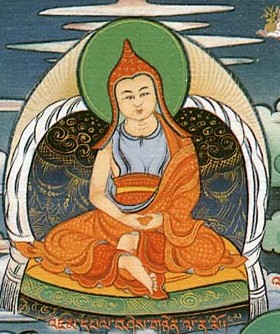Three categories: Difference between revisions
Jump to navigation
Jump to search
mNo edit summary |
mNo edit summary |
||
| Line 1: | Line 1: | ||
[[Image:Manjushrimitra.jpg|frame|'''Mañjushrimitra''']] | [[Image:Manjushrimitra.jpg|frame|'''Mañjushrimitra''']] | ||
'''Three categories''' or '''three classes''' (Tib. ''dé sum''; [[Wyl.]] ''sde gsum'') | '''Three categories''' or '''three classes''' (Tib. ''dé sum''; [[Wyl.]] ''sde gsum'') — the three categories into which [[Mañjushrimitra]] divided the [[Dzogchen]] teachings he received from [[Garab Dorje]]: | ||
#the [[outer category of mind]] (''semdé''), | #the [[outer category of mind]] (''semdé''), | ||
#the [[inner category of space]] (''longdé''), | #the [[inner category of space]] (''longdé''), and | ||
# | #the [[category of pith instructions]] (''mengak dé''). | ||
[[Category:Dzogchen]] | |||
[[Category:Enumerations]] | [[Category:Enumerations]] | ||
[[Category: | [[Category:3-Three]] | ||
Revision as of 08:31, 23 May 2009

Three categories or three classes (Tib. dé sum; Wyl. sde gsum) — the three categories into which Mañjushrimitra divided the Dzogchen teachings he received from Garab Dorje:
- the outer category of mind (semdé),
- the inner category of space (longdé), and
- the category of pith instructions (mengak dé).